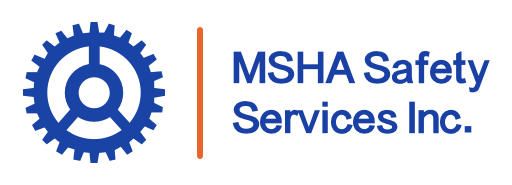Mining–it’s an inherently dangerous industry. Miners face risks every day that can lead to serious accidents or, tragically, fatalities. That’s where the Mine Safety and Health Administration (MSHA) steps in. As the organization responsible for overseeing safety in the mining sector, MSHA plays a critical role in preventing these accidents and improving working conditions for miners. Whether it’s investigating incidents, enforcing safety standards, or providing training programs, MSHA is at the forefront of efforts to make mining a safer place. In this article, we’ll take a closer look at how MSHA works to reduce fatalities, protect miners, and shape the future of safety in the industry.
MSHA’s Mission and History: Building a Foundation for Safer Mines
MSHA was established to protect the health and safety of miners across the U.S. Since it was created in 1977, the agency has worked tirelessly to enforce safety standards, investigate accidents, and educate the mining industry. This dedication has led to significant reductions in fatalities and injuries over the years. The core mission of MSHA is simple: to prevent death, disease, and injury in mining operations. Every action MSHA takes—whether it’s setting regulations or responding to incidents—is aimed at achieving this goal.
Key MSHA Safety Standards That Help Prevent Fatalities
Preventing fatalities starts with strong regulations, and MSHA has put in place several safety standards to ensure miners work in as safe an environment as possible. These include guidelines on:
- Safe operating procedures
- Proper ventilation systems
- Equipment standards
- Ground control plans
- Emergency preparedness protocols
These aren’t just guidelines for companies to follow—they’re crucial, life-saving standards. MSHA requires mining operations to identify and correct safety hazards before they result in injury or worse.
Enforcing Compliance: MSHA Inspections, Enforcement, and PPE Standards
One of MSHA’s primary functions is to conduct regular inspections of mining sites. When inspectors find violations, they can issue citations, fines, or even shut down operations to prevent further harm. PPE (Personal Protective Equipment) is a major focus of these inspections. MSHA ensures that miners are equipped with:
- Helmets
- Respirators
- Eye and hearing protection
- High-visibility clothing
By enforcing these standards, MSHA ensures miners have the right gear to protect themselves from the dangers they face underground.
Investigating and Responding to Mining Accidents and Fatalities: MSHA’s Critical Role
When a serious accident happens, MSHA takes immediate action. Their investigations serve several purposes:
- Identifying the root causes of accidents
- Determining if safety violations contributed to the event
- Recommending changes to prevent future incidents
MSHA’s transparency in these investigations—by publishing findings and recommendations—helps the entire industry learn from these tragedies, ultimately preventing similar events from happening elsewhere.
Protecting Workers: Miners’ Rights and Legal Safeguards
MSHA also plays a critical role in ensuring that miners know their rights. These rights include:
- The ability to refuse unsafe work without fear of retaliation
- The right to report hazards confidentially
- The opportunity to participate in safety training
These legal protections empower workers to speak up about unsafe conditions, helping to catch potential risks before they escalate into accidents.
Miner Training: A Key Element in Preventing Mining Accidents
Training is one of the most effective ways to prevent accidents, and MSHA places a strong emphasis on it. The agency requires miner training under Parts 46 and 48, which covers:
- Hazard recognition
- Emergency procedures
- Proper use of protective equipment
- Safe working practices
Training isn’t a one-time thing either; it’s ongoing, with refresher courses every year to ensure that miners are up to date with the latest safety standards. If you are looking for proper training for your employees, MSHA Safety Services provides certified online and in-person courses designed to meet Part 46 and Part 48 standards, ensuring crews are well-prepared, safe, and job-ready.
Emergency Preparedness and Response Planning
Emergencies can happen at any time in a mine, which is why MSHA ensures that every mine has a solid emergency response plan. These plans include:
- Clear evacuation routes
- Escapeway maps
- Communication systems
Additionally, MSHA encourages mines to conduct regular drills to make sure everyone is prepared when seconds count.

Collaborating for Safety: MSHA’s Work with Industry Stakeholders
Safety isn’t something MSHA can achieve alone. The agency works closely with a variety of partners, including:
- Mining companies
- Labor unions
- Equipment manufacturers
- Academic researchers
These collaborations help identify new safety risks, create better technologies, and improve training practices, ultimately making mining a safer industry for all.
Looking Ahead: MSHA’s Evolving Role in a Changing Industry
As the mining industry evolves, so too does MSHA’s role. New technologies, like autonomous equipment and AI-powered monitoring systems, are changing the way mines operate. MSHA is adapting to these changes, setting new standards to address emerging safety challenges, ensuring that it remains a key player in the fight to keep miners safe.
Building a Safer Future with MSHA’s Ongoing Commitment to Safety
MSHA’s commitment to preventing fatalities in mining is long-term. Through inspections, education, enforcement, and collaboration, the agency works hard every day to improve safety across the industry. While mining will always involve certain risks, the collective effort of miners, operators, and MSHA ensures that a future with fewer fatalities is within reach.

